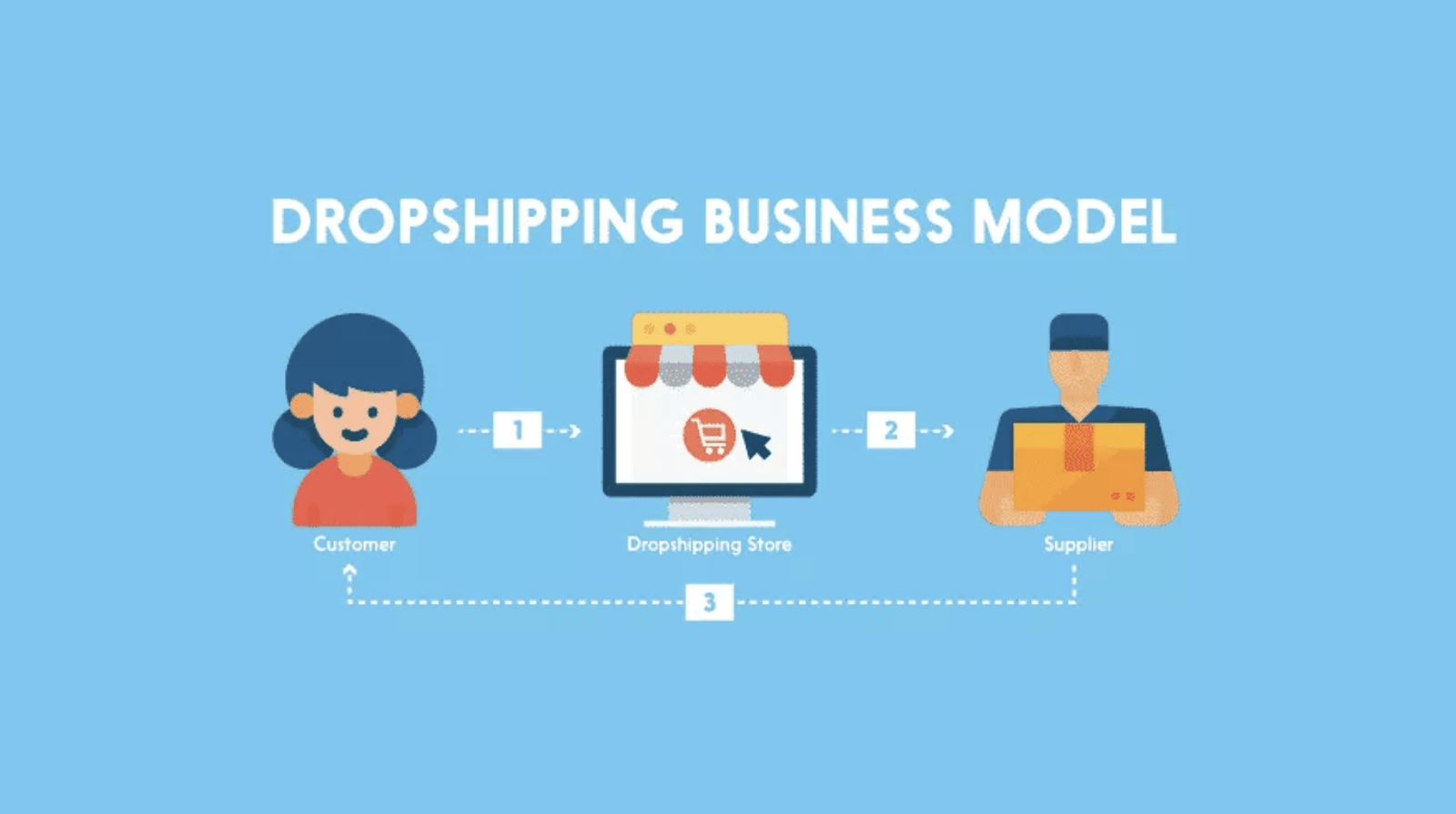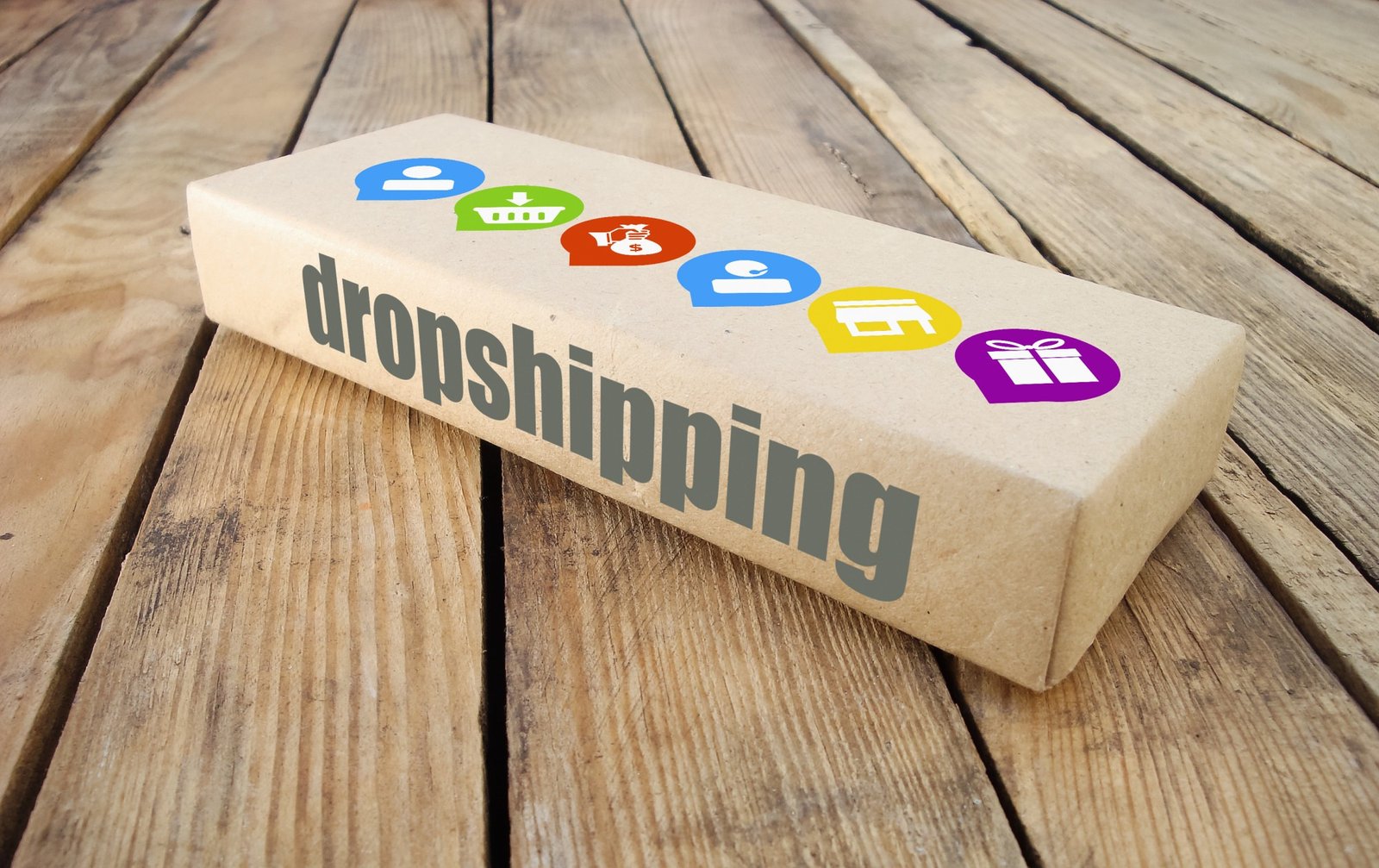Table of Contents
Drop shipping has emerged as a revolutionary business model in the realm of e-commerce, reshaping traditional retail paradigms and offering entrepreneurs unprecedented opportunities for success. At its core, drop shipping is a fulfillment method wherein online retailers sell products to customers without physically stocking inventory. Instead, orders are fulfilled directly by third-party suppliers or wholesalers, who ship products directly to the customer’s doorstep.
The allure of drop shipping lies in its inherent simplicity and accessibility. Unlike conventional retail models that require substantial upfront investment in inventory, storage facilities, and logistics, drop shipping minimizes financial risk and overhead costs for entrepreneurs. By eliminating the need for inventory management and order fulfillment, aspiring business owners can focus their resources and energy on marketing, customer acquisition, and brand building.
Drop Shipping Business Ideas
Understanding Market Trends

Understanding market trends is essential for businesses to stay relevant, competitive, and responsive to evolving consumer preferences and industry dynamics. Market trends encompass shifts in consumer behavior, emerging technologies, economic factors, and sociocultural influences that shape the business landscape. Here’s a breakdown of key aspects of understanding market trends:
Consumer Behavior: Analyzing consumer behavior involves studying how individuals make purchasing decisions, including their preferences, motivations, and buying habits. Businesses track trends such as increasing demand for online shopping, preference for sustainable products, and growing interest in personalized experiences to tailor their offerings accordingly.
Technological Advancements: Rapid technological advancements profoundly impact market trends, driving innovation, disrupting traditional industries, and creating new opportunities. Businesses monitor trends such as the rise of e-commerce platforms, adoption of artificial intelligence and machine learning, and proliferation of mobile devices to leverage technology for business growth.
Economic Factors: Economic trends, including changes in GDP, inflation rates, and consumer spending patterns, influence market dynamics and consumer confidence. Businesses must navigate economic uncertainties, such as recessions or fluctuations in currency exchange rates, to adapt their strategies and mitigate risks effectively.
Sociocultural Influences: Sociocultural trends reflect broader societal values, beliefs, and attitudes that shape consumer preferences and market demands. Businesses monitor trends such as shifting demographics, cultural diversity, and social movements to align their products and messaging with prevailing societal norms and values.
Competitive Landscape: Understanding the competitive landscape involves analyzing the strategies, strengths, and weaknesses of rival businesses operating within the same industry or market segment. Businesses assess factors such as market share, pricing strategies, product differentiation, and marketing tactics to identify opportunities for differentiation and competitive advantage.
Choosing Profitable Niches
Choosing profitable niches for your drop shipping business is essential for success in the competitive e-commerce landscape. A profitable niche is a segment of the market with high demand, low competition, and sufficient profit margins. Here’s how to identify and evaluate profitable niches:
Market Research: Start by conducting thorough market research to identify emerging trends, consumer preferences, and untapped opportunities. Use tools like Google Trends, Amazon Best Sellers, and social media insights to gauge market demand and popularity.
Passion and Expertise: Consider your own interests, hobbies, and expertise when selecting a niche. Building a business around a niche you’re passionate about can fuel your motivation and creativity while enabling you to connect more authentically with your target audience.
Competition Analysis: Evaluate the level of competition within your chosen niche by analyzing other drop shipping stores, e-commerce giants, and niche-specific retailers. Look for niches with moderate competition or gaps in the market where you can offer unique value propositions.
Profit Margins: Assess the profit potential of each niche by analyzing product pricing, supplier costs, and shipping expenses. Choose niches with products that have healthy profit margins to ensure profitability and sustainability for your business.
Audience Targeting: Identify your target audience and their specific needs, preferences, and pain points within your chosen niche. Tailor your product offerings and marketing strategies to resonate with your target audience, fostering stronger brand loyalty and customer engagement.
Seasonal Trends: Consider the seasonality of products within your chosen niche and how it may impact sales throughout the year. Balance evergreen products with seasonal offerings to maintain consistent revenue streams and adapt to shifting consumer behaviors.
Identifying Reliable Suppliers

Identifying reliable suppliers is crucial for the success of any drop shipping business. Here’s how to navigate this process effectively:
Thorough Research: Start by researching potential suppliers within your chosen niche. Utilize online directories, trade shows, industry forums, and supplier databases to identify a list of candidates.
Vetting Process: Once you have a list of potential suppliers, conduct a thorough vetting process to assess their reliability and suitability. Look for indicators such as their reputation in the industry, years of experience, client testimonials, and any certifications or accreditations they may hold.
Product Quality: Evaluate the quality of the products offered by each supplier. Request samples to assess the materials, craftsmanship, and overall quality standards. Ensure that the products meet your standards and align with your brand image.
Communication: Establish open lines of communication with potential suppliers to gauge their responsiveness, professionalism, and willingness to collaborate. Clear and timely communication is essential for addressing any issues or concerns that may arise during the partnership.
Shipping Times and Costs: Inquire about the supplier’s shipping times and costs to ensure that they can meet your customers’ expectations for timely delivery. Consider factors such as shipping methods, transit times, and any additional fees or charges involved.
Terms and Conditions: Review the supplier’s terms and conditions, including pricing, payment terms, return policies, and any contractual agreements. Clarify any ambiguities or concerns before entering into a partnership.
Building Your Brand
Building your brand is a multifaceted process that involves defining your identity, connecting with your audience, and establishing trust and credibility in the marketplace. Here’s a concise overview of key steps to effectively build your brand:
Define Your Brand Identity: Start by clarifying your brand’s mission, values, and unique selling propositions (USPs). What sets your brand apart from competitors? What do you stand for, and who is your target audience? These foundational elements will serve as the guiding principles for your brand identity.
Develop a Compelling Brand Story: Craft a narrative that resonates with your audience and communicates the essence of your brand. Your brand story should evoke emotion, create a connection with customers, and highlight what makes your brand authentic and relatable.
Establish Visual Branding: Design a cohesive visual identity that reflects your brand’s personality and values. This includes elements such as your logo, color palette, typography, and imagery. Consistent branding across all touchpoints reinforces brand recognition and strengthens brand recall.
Build Brand Awareness: Utilize various marketing channels and strategies to increase visibility and reach your target audience. This may include content marketing, social media marketing, influencer partnerships, paid advertising, and public relations efforts. Consistent messaging and engagement will help elevate your brand’s presence in the minds of consumers.
Foster Brand Loyalty: Focus on cultivating meaningful relationships with your customers by delivering exceptional experiences and exceeding their expectations. Provide outstanding customer service, solicit feedback, and reward loyalty through loyalty programs, exclusive offers, and personalized communication.
Maintain Brand Consistency: Ensure that every interaction with your brand reinforces the same brand identity and values. Consistency across all brand touch points, including your website, social media profiles, packaging, and customer communications, builds trust and credibility with your audience.
Setting Up Your E-commerce Store
Drop shipping Setting up your e-commerce store involves several crucial steps to ensure a seamless and successful launch. Here’s a concise overview of the process:
Choose Your E-commerce Platform: Selecting the right e-commerce platform is foundational to your store’s success. Popular options include Shopify, Woo Commerce, Big Commerce, and Magento. Consider factors such as ease of use, customization options, scalability, and pricing when making your decision.
Register Your Domain and Hosting: Choose a domain name that reflects your brand identity and is easy to remember. Register it with a domain registrar and secure reliable hosting for your website to ensure optimal performance and uptime.
Design Your Website: Customize your website’s appearance and layout to align with your brand aesthetic and provide an intuitive user experience. Choose a responsive design that looks great on both desktop and mobile devices. Incorporate high-quality product images, clear navigation menus, and compelling calls-to-action to guide visitors through the purchasing journey.
Set Up Product Pages: Create detailed product pages for each item you’re selling, including captivating product descriptions, pricing information, variants (if applicable), and eye-catching images or videos. Ensure that product pages are optimized for search engines to improve visibility and attract organic traffic.
Configure Payment Gateways: Integrate secure payment gateways to facilitate smooth and secure transactions for your customers. Popular payment gateways include PayPal, Stripe, Square, and Authorize.Net. Offer multiple payment options to accommodate diverse customer preferences.
Optimize for SEO: Enhance your website’s visibility in search engine results by optimizing meta tags, titles, headings, and product descriptions with relevant keywords. Create informative content such as blog posts, guides, and product reviews to attract organic traffic and engage potential customers.
Marketing and Promotion Strategies

Marketing and promotion strategies play a vital role in the success of any drop shipping business, helping to increase brand visibility, attract potential customers, and drive sales. Here are some key strategies to consider:
Social Media Advertising: Utilize platforms like Facebook, Instagram, and TikTok to create targeted advertising campaigns that reach your ideal audience based on demographics, interests, and behaviors. Leverage eye-catching visuals, compelling copy, and interactive ad formats to capture attention and drive engagement.
Influencer Partnerships: Collaborate with influencers in your niche to promote your products to their followers. Identify influencers whose audience aligns with your target market and negotiate partnerships for sponsored posts, product reviews, or giveaways. Authentic endorsements from trusted influencers can significantly boost brand credibility and generate buzz around your products.
Content Marketing: Develop high-quality content that educates, entertains, or inspires your audience while subtly showcasing your products. Create blog posts, videos, infographics, or user-generated content that address common pain points, offer solutions, or highlight product benefits. Share your content across various channels, including your website, social media, and email newsletters, to attract and engage potential customers.
Email Marketing: Build and nurture relationships with your audience through personalized email campaigns. Segment your email list based on user preferences, purchase history, or engagement level, and tailor your messaging accordingly. Send targeted email sequences, promotional offers, and product recommendations to drive repeat purchases and encourage customer loyalty.
Search Engine Marketing (SEM): Increase visibility and drive traffic to your website through paid search advertising on platforms like Google Ads. Conduct keyword research to identify relevant search terms with high commercial intent, and create compelling ad copy and landing pages optimized for conversions. Monitor and analyze campaign performance regularly to optimize your ads for maximum ROI.
Affiliate Marketing: Partner with affiliate marketers or influencers to promote your products in exchange for a commission on sales generated through their referral links. Join affiliate networks or create your own affiliate program to recruit affiliates and track their performance. Provide affiliates with promotional materials, tracking tools, and incentives to motivate them to promote your products effectively.
Managing Operations and Customer Service
Managing operations and customer service effectively is essential for the success of a drop shipping business. Here’s how to excel in these areas:
Streamlined Order Processing: Implement efficient systems for order processing, including automatic order fulfillment and real-time inventory management. Utilize software solutions like order management systems (OMS) or e-commerce platforms with built-in order processing capabilities to streamline workflows and minimize manual errors.
Inventory Management: Maintain accurate inventory records and monitor stock levels closely to avoid stockouts or overselling. Establish partnerships with reliable suppliers who offer timely updates on product availability and shipping statuses. Consider implementing drop shipping automation tools to synchronize inventory data between your store and suppliers’ systems seamlessly.
Shipping Logistics: Optimize shipping logistics to ensure timely delivery of orders to customers. Choose shipping carriers based on factors like speed, reliability, and cost-effectiveness. Offer multiple shipping options to accommodate varying customer preferences and delivery timeframes. Provide tracking information for orders to keep customers informed of their shipment’s progress.
Customer Service Excellence: Prioritize exceptional customer service to build trust and loyalty among your customer base. Respond promptly to customer inquiries and concerns through multiple communication channels, including email, live chat, and social media. Train customer service representatives to handle inquiries professionally and empathetically, resolving issues promptly and satisfactorily.
Proactive Communication: Keep customers informed throughout the purchasing journey with proactive communication. Send order confirmation emails, shipping notifications, and delivery updates to provide transparency and reassurance. Anticipate potential issues or delays and communicate proactively with customers to manage expectations and mitigate dissatisfaction.
Feedback Collection and Analysis: Gather feedback from customers through surveys, reviews, and ratings to identify areas for improvement and gauge satisfaction levels. Analyze customer feedback regularly to identify trends, address recurring issues, and implement corrective actions to enhance the overall customer experience.
Scaling Your Business

Scaling your business involves strategically increasing its size and capacity to accommodate growth while maintaining or improving efficiency and profitability. It’s about expanding operations, resources, and infrastructure in a sustainable manner to meet growing demand and capitalize on new opportunities. Here’s how you can effectively scale your drop shipping business:
Evaluate Current Operations: Assess your current business processes, systems, and resources to identify areas for improvement and optimization. Streamline workflows, eliminate inefficiencies, and automate repetitive tasks where possible to increase productivity and scalability.
Focus on Customer Acquisition and Retention: Invest in marketing and customer acquisition strategies to attract new customers and expand your customer base. Additionally, prioritize customer satisfaction and retention initiatives to foster loyalty and repeat business, maximizing the lifetime value of each customer.
Expand Product or Service Offerings: Diversify your product or service offerings to appeal to a broader audience and capture additional market share. Conduct market research to identify new opportunities, innovate and develop new products or services, or explore partnerships and collaborations to expand your business offerings.
Invest in Technology and Infrastructure: Upgrade your technology infrastructure, software systems, and tools to support increased demand and facilitate business growth. Implement scalable solutions that can accommodate higher volumes of transactions, data, and users as your business expands.
Build a High-Performing Team: Recruit and retain top talent to support your business growth objectives. Invest in employee training and development programs to enhance skills and capabilities, delegate responsibilities effectively, and empower your team to contribute to the company’s success.
Conclusion
Launching a successful drop shipping business requires meticulous planning, strategic execution, and unwavering dedication. By identifying profitable niches, selecting reliable suppliers, and building a compelling brand, entrepreneurs can establish a strong foundation for growth. Creating an engaging e-commerce store, implementing effective marketing strategies, and prioritizing exceptional customer service are essential steps in driving sales and fostering customer loyalty.
As the business evolves, entrepreneurs must remain agile and adaptable, continuously monitoring market trends and optimizing operations to stay ahead of the competition. With perseverance, creativity, and a commitment to excellence, entrepreneurs can harness the power of drop shipping to realize their entrepreneurial dreams and build a thriving business that resonates with their target audience. By following the insights and guidelines outlined in this guide, aspiring entrepreneurs can embark on their drop shipping journey with confidence, equipped with the knowledge and tools needed to succeed in the dynamic world of e-commerce.



Leave a Reply